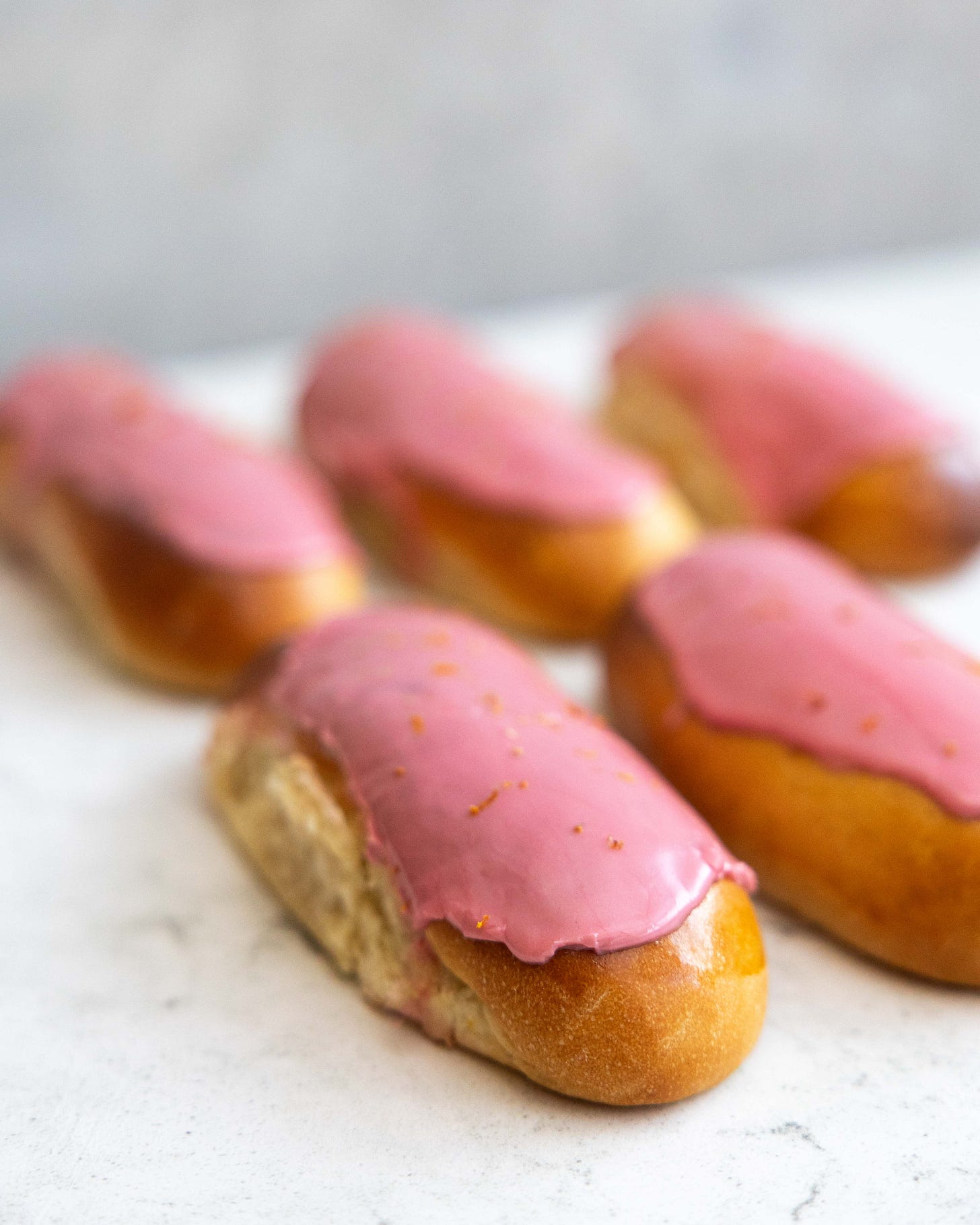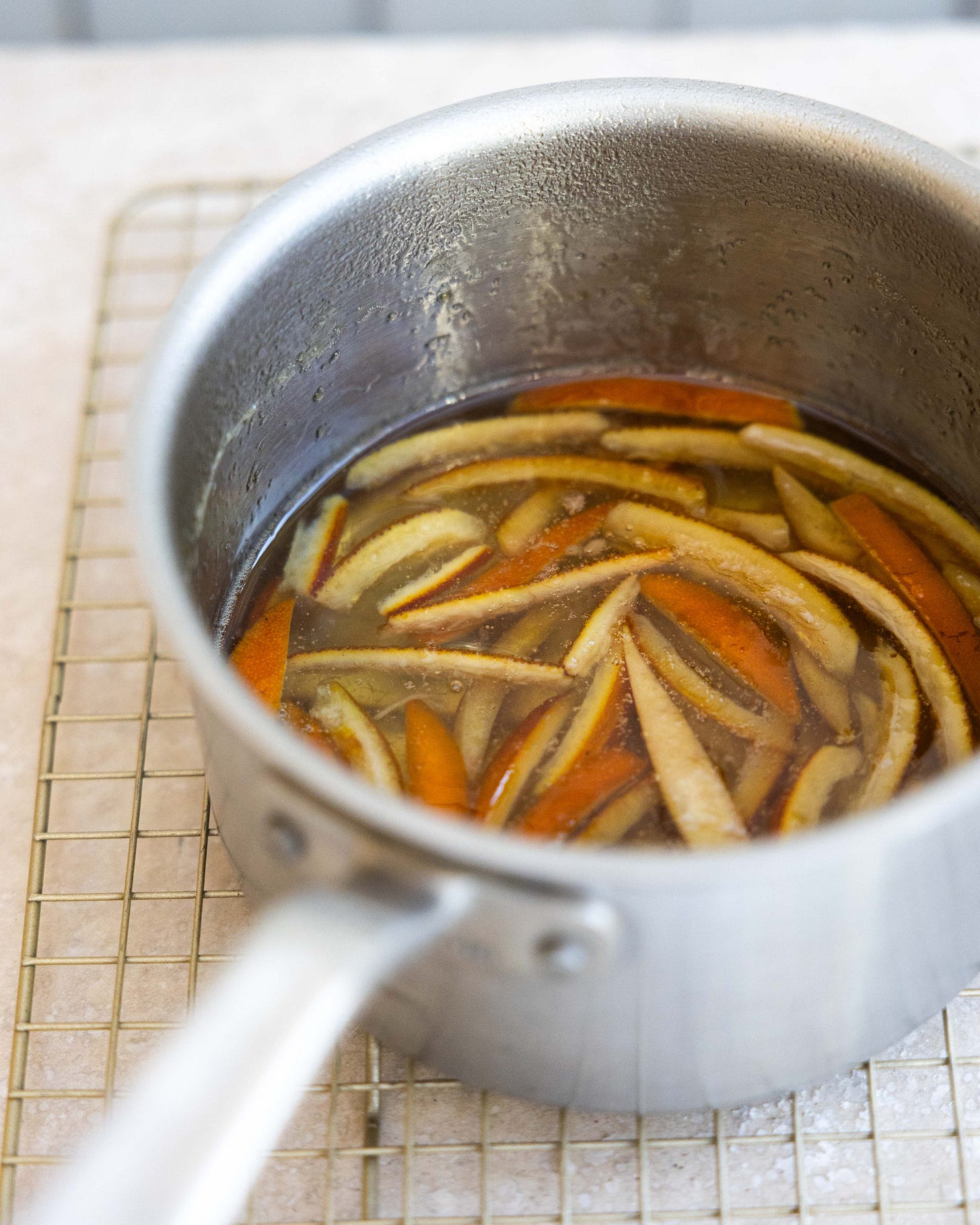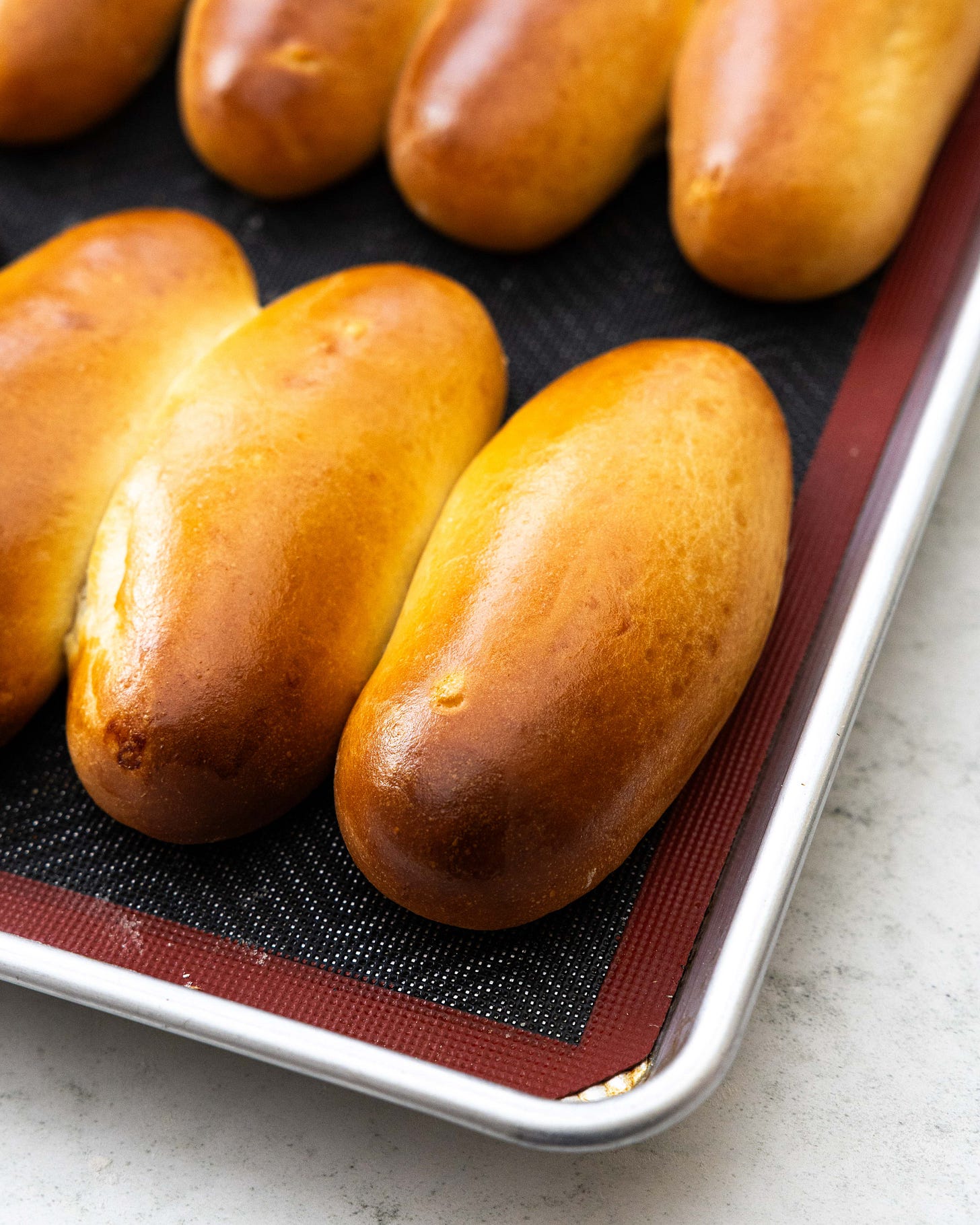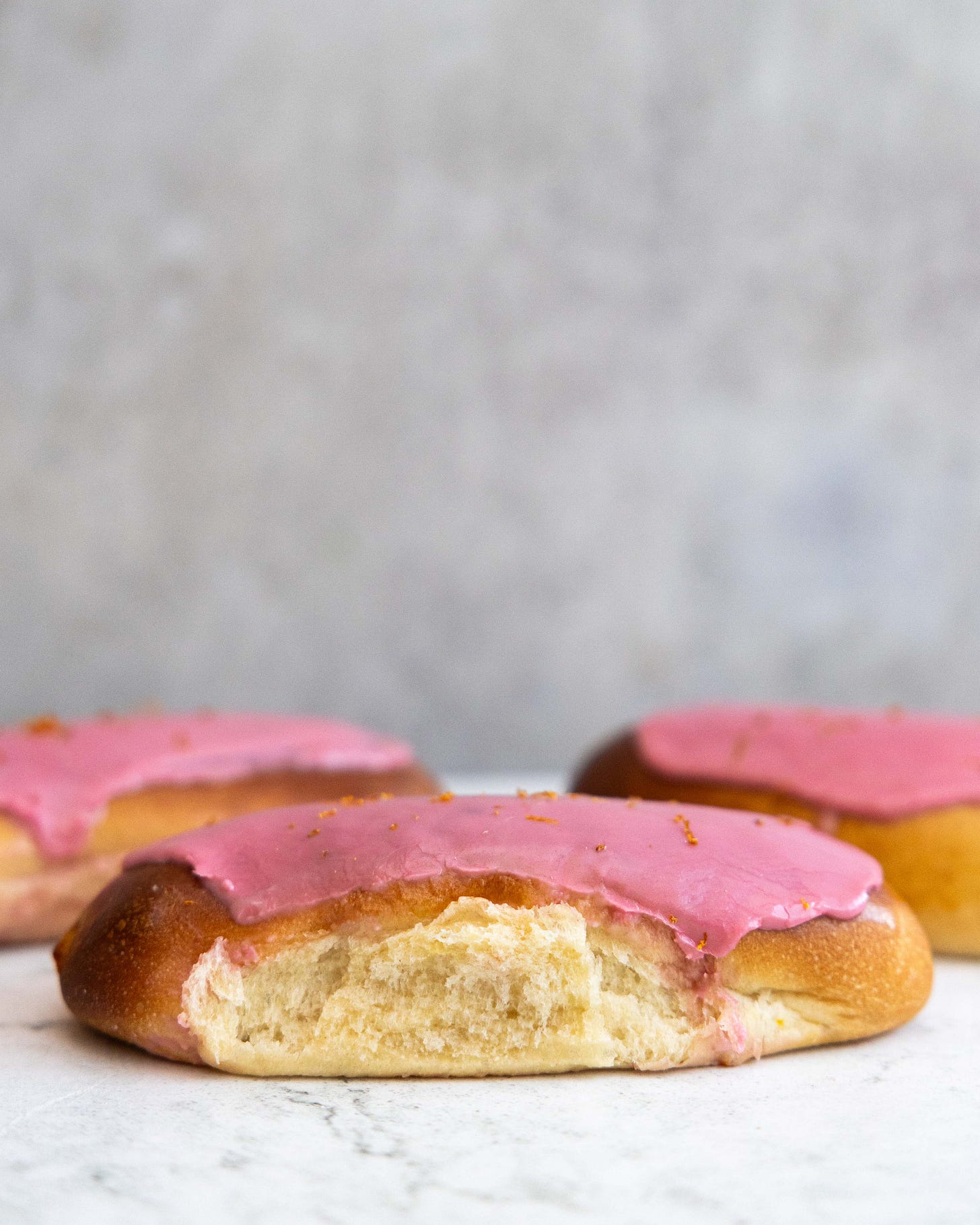Hello, happy friday!
This week I have a two brilliant recipes for you. For free subsrcibers there is a recipe for candied blood orange peel, a great way to use up every bit of the orange. For Second Helpings subscribers I have a fabulous old school british recipe, an updated take on Iced Finger Buns. As it is blood orange season the buns have taken a hop skip and a jump to the Mediterranean and become a fragrant joy.
What is Second Helpings? That is the paid tier of this newsletter where you will receive weekly recipes for just £5 a month. Supporting the newsletter allows me to continue testing and posting recipes every week, you get access to an ever growing archive of exclusive recipes and you get to join a community of bakers. Give it a go!
Outside of the UK I think these buns might seem unusual, they might even seem a little underwhelming, or boring. But here in Blighty an iced finger holds a special place in many a persons heart, mine included. The simple bun is traditionally made with a lightly sweetened bread dough and topped with the simplest of icings, made with just icing sugar and water. Whilst simple, they’re delicious in that simplicity and like a lot of the recipes I make, they’re incredibly nostalgic. This is an everyman type of recipe, these buns are sold in everything from the supermarket, to the chain high street bakery, to the artisan bakery. To make this classic my own I wanted to add a little extra, an added flavour to make these something more enticing. As blood oranges are in season I thought a little citrus kick would work incredibly well. The juice of the blood orange would would wonderfully in the icing giving both a lift in brightness and a dramatic shift in colour making the icing a glorious pink. But, becuase the icing uses only a little blood orange juice, the flavour wouldn’t be enough to make these special so to make these stand out I candied the peel from a couple oranges and mixed that peel through the dough to make something more intensely flavoured with blood orange.
Talking of the dough, what recipe to use? The traditional recipe uses nothing fancy like a brioche, it’s a pretty simple lightly sweetened dough. The key memory I have of the buns is that the dough is particularly soft so I went with the softest of bread dough I know, a milk bread made using the tangzhong method. If you’ve never made this style of dough you are in for a treat, it is incredibly simple to make and creates the absolute lightest, fluffiest, most tender of bread doughs. The Tangzhong element is a mandarin word for a paste made of milk/water and flour, almost like a very thick roux. This paste is added to the bread dough and it has extraordinary culinary powers.
When the milk and flour are cooked together the flour gelatinises and the mixture forms a thick paste, the starch in the flour swells and soaks up the milk and holds on to it for dear life. This makes bread which is incredibly soft and which stays fresher for longer. It my favourite dough to make breads that need the texture of something light like a brioche but without feeling as rich. The final bread dough does include egg and butter but not to the degree you’d find in a brioche so the dough is incredibly easy to handle.
A quick note on blood oranges. Firstly, if you cant get your hands on this variety, feel free to use the more common naval oranges but if you do decide to hunt down these ruby beauties, a couple points. Blood orange as a category includes three different varieties; Tarroco and Moro, both from Italy, and Sanguinello, which hails from Spain. If you are looking for blood oranges with the darkest flesh it can be a little bit like a lottery, but choosing a Moro orange gives you the best chance, as they tend to have the darkest flesh amongst their siblings. I also prefer the Moro variety because they tend to have a slightly stronger bitterness and the overall flavour is punchier.
The finished buns are still recognisable as iced fingers but the flavour is a little more adventurous, the candied orange adds a real fragrance to the soft buns, but in the end they’re still those delicious buns I remember from my childhood, all coated in that rustic messy icing I loved then and still now.
Candied Orange Peel
2 blood oranges
200g caster sugar
200ml water
To make the candied peel, slice off both ends of the oranges with a sharp knife, and then use the knife to score the peel into quarters. Carefully remove the peel from the fruit and then cut into strips. When using regular navel oranges you have a peel that separates from the flesh very easily and using your hands to remove the peel is very straightforward, but with blood orange the peel tends to cling to the fruit and peeling it by hand can be trickier. You may need to cut the orange into quarters and use a pairing knife to cut away the fruit. Once sliced, put the peel in a medium pan and cover with cold water.
Set the pan over a high heat and bring to the boil, then simmer for 2 minutes to blanch the peel. Drain off the boiling water. Repeat this process another two to three times. This helps to reduce the bitterness in the fruit and make the candied peel more palatable.
Set the peel aside and put the sugar for the peel in the pan and add 200ml water. Bring to the boil over a medium-high heat. Add the orange peel and reduce the heat to a low simmer, then cook for up to 1 hour or until the peel is translucent. As the peel cooks you can give the pan the occasional swirl but resist the urge to stir the mixture, agitation can lead to the sugar crystallising.
Once the peel is candied remove the pan from the heat and using a pair of tongs, carefully lift the peel from the syrup and put it onto a piece of baking parchment. (You can keep the leftover syrup and use it in cocktails.)
Leave the peel to dry for at least 4 hours or until the peel is tacky but no longer wet. If coating in sugar put the sugar in a small bowl and toss in the peel to coat thoroughly. Put the sugar-coated peel onto a clean sheet of baking parchment and leave to dry out overnight. If you are using the peel in the iced finger bun recipe over on Second Helpings then you don’t need to add the sugar coating.
Once coated in sugar these will keep for weeks if not months.
Keep reading with a 7-day free trial
Subscribe to The Boy Who Bakes to keep reading this post and get 7 days of free access to the full post archives.







